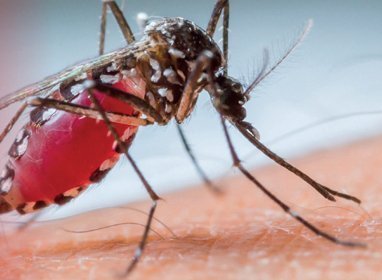Shipping the Zika virus around the world

Videotel has produced a video and companion digital workbook on the dangers of this growing virus.
Fleet owners, shipmanagers, masters: you are responsible for taking measures to prevent the Zika virus from being passed on, as well as for protecting everyone onboard.
The mosquito-transmitted infection, which occurs in tropical areas including Africa, the Americas, the Caribbean, Southeast Asia and the Pacific islands, has become an international public health emergency, and is expected to continue to spread. Scientists believe it will eventually extend its range to Europe and other continents through transmission by infected travellers.
Four out of five victims show no symptoms; those who do usually have a fever, rash, bloodshot eyes, headaches and joint pain.
Of urgent concern is that the disease is known to cause devastating birth defects and there is as yet no specific treatment or vaccine available. Transmission is predominantly through bites from an Aedes species mosquito. Infected pregnant women can pass it on to their fetuses. It is also possible to spread the virus through blood transfusions and through sexual contact.
The risk of ships’ crews or passengers spreading the disease to their home country following a voyage is low due to the short incubation period and a lack of Aedes mosquitoes in more temperate countries.
While tropical locales of the disease include some of the world’s busiest shipping ports, because of the short incubation, it’s unlikely that virus-infected mosquitoes or eggs are carried to new areas.
Nonetheless, the possibility still exists that some cargoes, particularly used tires and ornamental plants such as lucky bamboo, can carry invasive mosquito species. Female mosquitoes can live for several weeks and their eggs can hibernate for months at low temperatures as long as they don’t dry out. Implementation of an integrated pest management plan to avoid passive transportation of virus-infected mosquitoes by ports and ships is recommended. Measures such as keeping tires dry and spraying cut ornamental plants with insecticide can also prevent the spread of the virus.
Regardless of the onboard risk, seafarers should understand what Zika is and how to protect themselves in ports where it’s been reported.
Zika Virus – Staying Safe, produced by Videotel, a KVH company, explains the dangers of the virus and how to help prevent its spread. The new, 13-minute safety and training video and companion workbook, free to mariners, was produced with assistance from the International Maritime Health Association (IMHA) and a panel of medical experts. KVH also multicast the training video recently to its IP-MobileCast customers on vessels across the globe for immediate viewing onboard.
Highlights from the video and workbook explain that the Zika virus usually remains live in the blood of an infected person for about a week, but can be found longer in some people; flu-like symptoms usually last for 2-7 days. The incubation, or time from exposure to symptoms, is likely to be a few days to a week. During the first period of infection, Zika virus can be found in the blood and passed from an infected person to a mosquito through mosquito bites. An infected mosquito can then spread the virus to other people. Because the Aedes usually travels no more than 1,200 ft in its lifetime, it’s people, rather than the insects, who are rapidly moving the virus within and between communities and places.
Because of the flu-like symptoms, and the fact that most victims don’t know they are infected, most people with Zika never go to the hospital. And though the virus doesn’t kill, the side effects to victims and their families demand immediate preventive measures.
Masters and seafarers who work in infected areas are at risk of picking up the virus. Stay safe by following this advice:
- Have and use insect repellent
- Wear loose fitting, light-colored clothing that covers extremities
- Shower frequently, especially after exercise or any type of physical exertion
- Keep all doors and portholes closed; use mesh screens and sleep under netting
- Keep air conditioning on
- Develop an Integrated Pest Management Plan to control or eliminate incidents of insects and pests on board
- When ashore, avoid areas of stagnant or standing water
- Ensure that all onboard have supplies and information
- Avoid standing water in lifeboats, coiled mooring ropes, bilges, scuppers, awnings and gutters
- Ensure everybody is aware of how the virus is transmitted sexually, as well as by mosquito
- Male and female seafarers should follow guidelines from the World Health Organization about safe sex and pregnancy
To obtain the complete video and digital book, log on to the KVH Zika virus safety website by clicking here.
